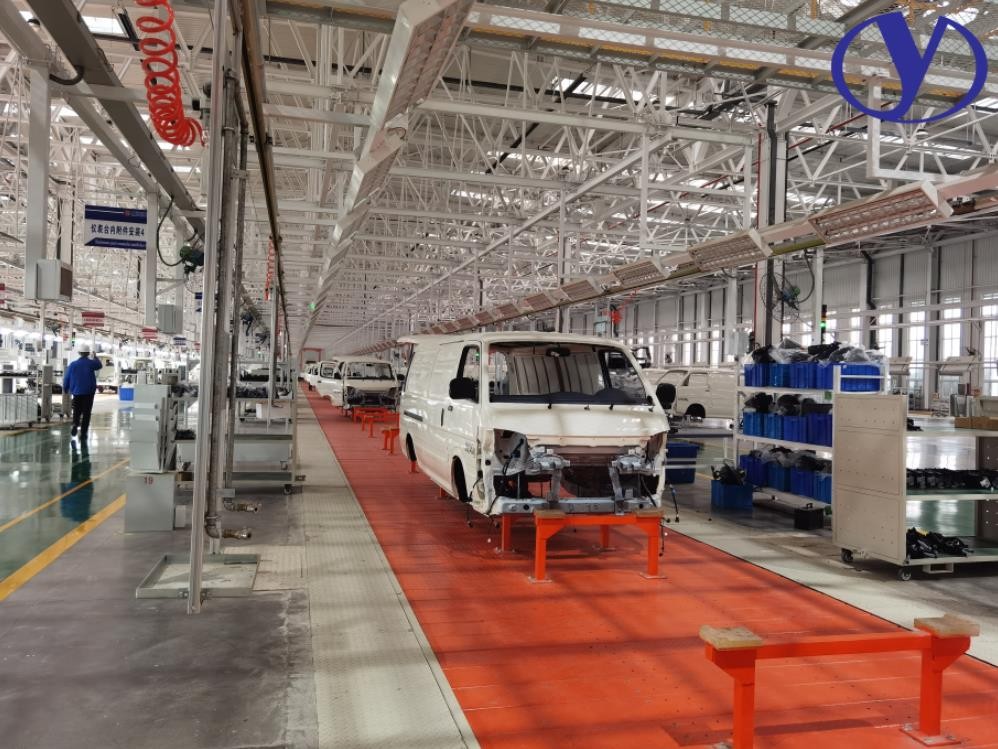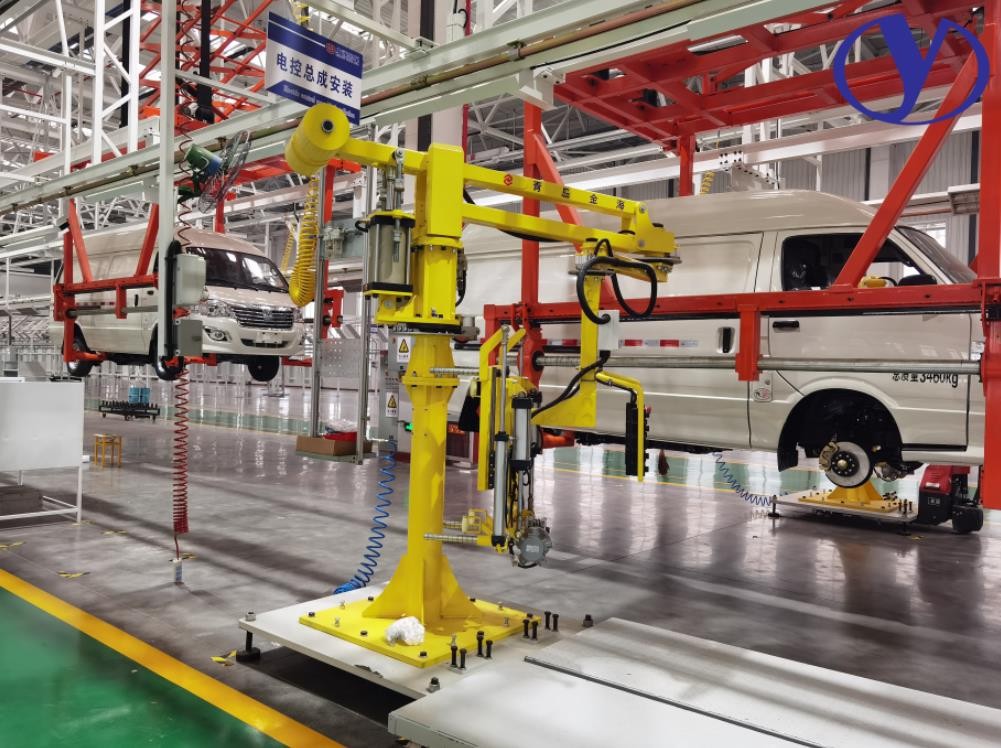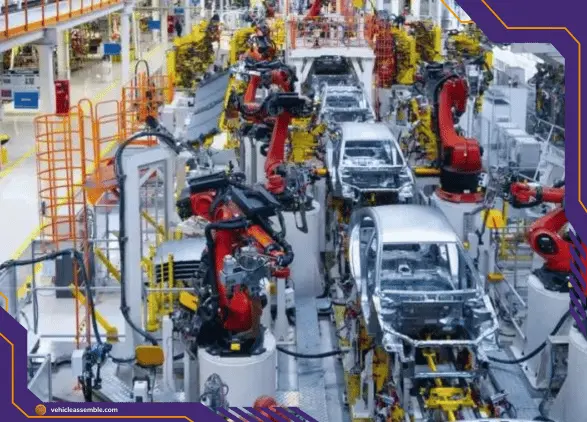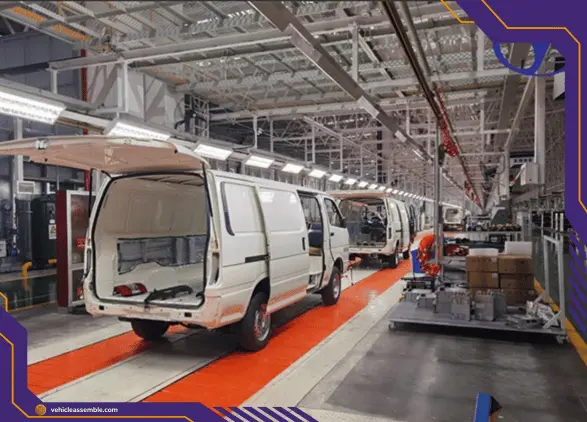

Light Bus Vehicle Complete Automotive Production Line
Delve into the intricate world of Light Bus Vehicle Complete Automotive Production Line. This guide gives you a detailed, insightful look into the production process, technology, efficiency, and challenges surrounding this fascinating realm of automotive manufacturing.


Description
Understanding the Light Bus Vehicle Complete Automotive Production Line: A Comprehensive Guide
Delve into the intricate world of Light Bus Vehicle Complete Automotive Production Line. This guide gives you a detailed, insightful look into the production process, technology, efficiency, and challenges surrounding this fascinating realm of automotive manufacturing.
Introduction
Today's industrial age presents a plethora of advancements, one of the most prominent being the Light Bus Vehicle Complete Automotive Production Line. This process revolutionizes bus manufacturing by integrating cutting-edge technology, boosting efficiency, and shaping the transportation industry's future. This comprehensive guide walks you through every process step, providing an in-depth understanding of the manufacturing line's inner workings.
Light Bus Vehicle Complete Automotive Production Line
The Light Bus Vehicle Complete Automotive Production Line signifies a combination of detailed assembly processes and high-tech systems designed to create light buses. This automotive production line presents a unique blend of manual labor and robotics from the initial design phase to the final assembly. This ensures a seamless transition from raw materials to a complete, road-ready vehicle.
Planning and Design
The journey of a light bus begins in the design department. Here, automotive engineers draft, evaluate, and finalize a blueprint combining aesthetic appeal and functional utility. The design phase is crucial for any automotive production line, from determining the bus's size and structure to planning the seating capacity and safety features.
Procuring Materials
Material procurement entails sourcing raw materials and parts to build a light bus. Many materials converge on the production line, from steel frames and fiberglass panels to engine components and electrical systems, ensuring the assembly process goes smoothly.
Body and Chassis Assembly
The production line's heart is the body and chassis assembly stage, where workers and machines collaborate to construct the light bus's basic structure. This phase ensures the vehicle's durability and safety by utilizing high-precision devices and skilled manual labor.
Installation of Mechanical Parts
The next phase involves installing mechanical parts following the bus's body and chassis assembly. The engine, transmission, brakes, and suspension systems are carefully fitted into the bus, readying it for its eventual purpose on the roads.
Interior Fittings and Finishings
With the bus's mechanical aspects in place, the focus shifts to the interior. Seats, safety belts, windows, and other essential fittings are installed meticulously, ensuring passenger comfort and safety.
Painting and Finishing
The final stage in the production line is painting and finishing. The bus's exterior is coated with layers of paint, followed by polishing and adding decals or branding elements, marking the culmination of the production process.
Quality Control and Testing
A rigorous quality control and testing phase ensures readiness before the bus rolls onto the road. From safety checks and functionality tests to road tests for performance assessment, this stage guarantees that the light bus meets all necessary standards and regulations.
Emerging Technologies in Light Bus Vehicle Production
As technology evolves, so does the Light Bus Vehicle Complete Automotive Production Line. Modern advancements like AI, robotics, and IoT are crucial in transforming production, enhancing efficiency, and reducing costs.
Robotics and Automation
With the advent of robotics and automation, repetitive tasks on the assembly line have become more precise and efficient, leading to improved product quality and increased productivity.
Artificial Intelligence (AI)
AI brings predictive capabilities and data-driven insights to the production line. It helps identify potential issues early, optimizes production, and improves operational efficiency.
Internet of Things (IoT)
The integration of IoT technology enables real-time tracking and analysis of the production process. IoT transforms managing and optimizing production lines from monitoring machine performance to predicting maintenance needs.
Challenges and Solutions in Light Bus Vehicle Production
The automotive manufacturing industry, like any other, faces its share of challenges. However, innovative solutions continue to transform these obstacles into opportunities for growth and improvement.
Increasing Demand and Production Pressure
With the growing demand for light buses, manufacturers are under increasing pressure to boost production. Automated production lines, advanced robotics, and data-driven analytics can help meet this rising demand without compromising product quality.
Environmental Concerns and Sustainability
The automotive industry is a significant contributor to environmental pollution. Manufacturers can significantly mitigate their environmental impact by adopting green manufacturing practices, utilizing sustainable materials, and improving fuel efficiency.
Technological Disruptions
The rapid pace of technological advancements poses both opportunities and challenges. Staying updated with the latest technologies and integrating them into the production line can lead to significant efficiency gains and cost reductions.
FAQs
What is the Light Bus Vehicle Complete Automotive Production Line?
The Light Bus Vehicle Complete Automotive Production Line is a manufacturing process that involves the systematic assembly and production of light buses, from design and material procurement to assembly, finishing, and quality control.
How does technology impact the Light Bus Vehicle Complete Automotive Production Line?
Technology plays a pivotal role in modern production lines. The technology significantly optimizes the production process from robotics and automation, enhancing precision and efficiency, to AI and IoT, providing data-driven insights and predictive capabilities.
What are the critical stages in a Light Bus Vehicle Complete Automotive Production Line?
The key stages include planning and design, material procurement, body and chassis assembly, installation of mechanical parts, interior fittings and finishings, painting and finishing, and quality control and testing.
What challenges does the Light Bus Vehicle Production Line face?
Some key challenges include meeting the rising demand without compromising quality, mitigating environmental impact, and adapting to rapid technological changes.
How are these challenges addressed?
These challenges are addressed through advanced automation, adopting sustainable practices, utilizing efficient materials, and staying abreast of technological advancements.
How does a Light Bus Vehicle Complete Automotive Production Line ensure product quality?
Quality is guaranteed through rigorous quality control and testing stages. From functionality tests to safety checks and road performance assessments, every aspect of the bus is scrutinized before it hits the road.
Conclusion
The Light Bus Vehicle Complete Automotive Production Line is a fascinating journey of innovation, precision, and dedication. It symbolizes how the perfect blend of human skills and technological advancements can bring forth reliable, efficient, and sustainable modes of transportation.



